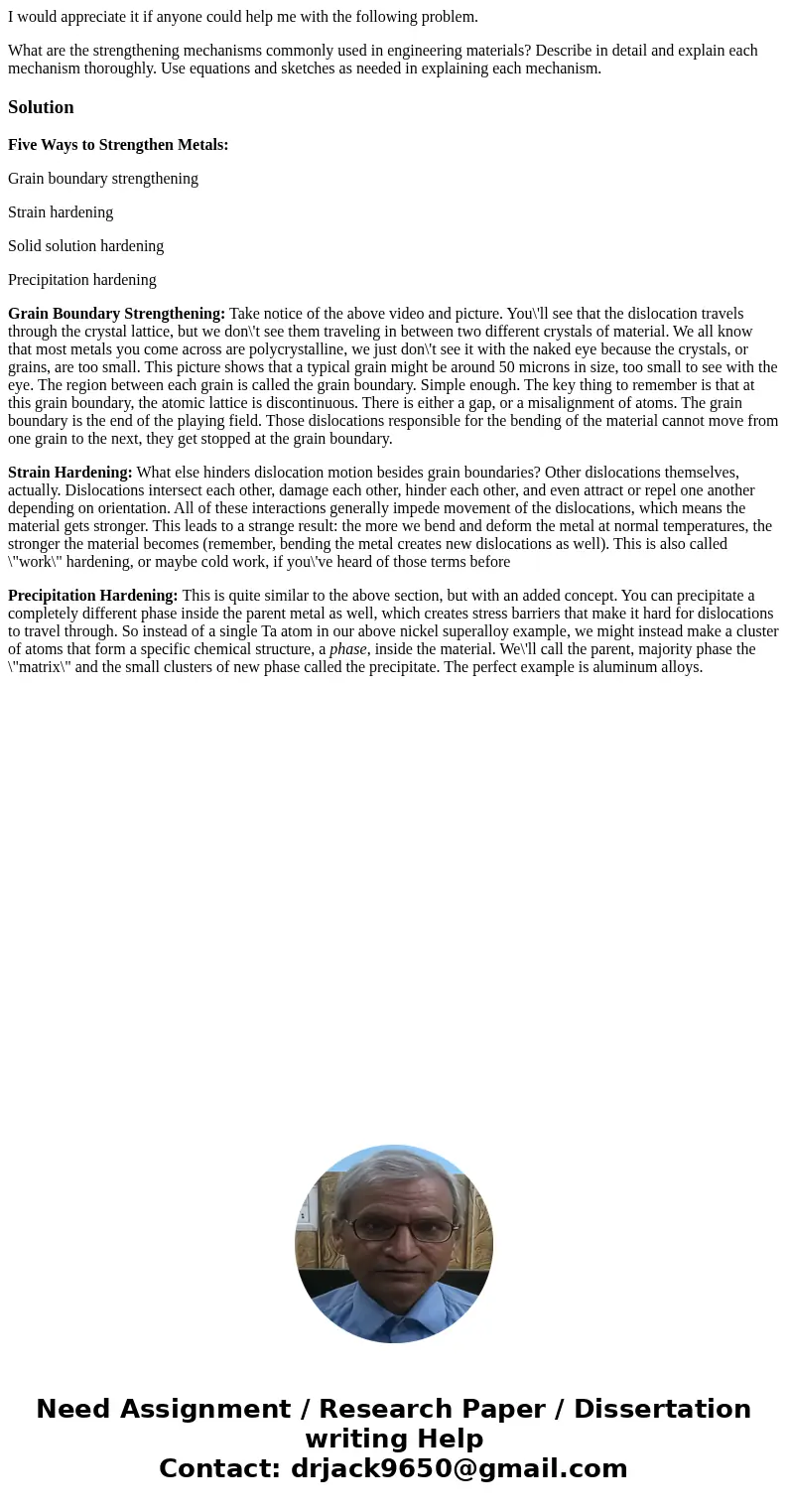I would appreciate it if anyone could help me with the follo
I would appreciate it if anyone could help me with the following problem.
What are the strengthening mechanisms commonly used in engineering materials? Describe in detail and explain each mechanism thoroughly. Use equations and sketches as needed in explaining each mechanism.
Solution
Five Ways to Strengthen Metals:
Grain boundary strengthening
Strain hardening
Solid solution hardening
Precipitation hardening
Grain Boundary Strengthening: Take notice of the above video and picture. You\'ll see that the dislocation travels through the crystal lattice, but we don\'t see them traveling in between two different crystals of material. We all know that most metals you come across are polycrystalline, we just don\'t see it with the naked eye because the crystals, or grains, are too small. This picture shows that a typical grain might be around 50 microns in size, too small to see with the eye. The region between each grain is called the grain boundary. Simple enough. The key thing to remember is that at this grain boundary, the atomic lattice is discontinuous. There is either a gap, or a misalignment of atoms. The grain boundary is the end of the playing field. Those dislocations responsible for the bending of the material cannot move from one grain to the next, they get stopped at the grain boundary.
Strain Hardening: What else hinders dislocation motion besides grain boundaries? Other dislocations themselves, actually. Dislocations intersect each other, damage each other, hinder each other, and even attract or repel one another depending on orientation. All of these interactions generally impede movement of the dislocations, which means the material gets stronger. This leads to a strange result: the more we bend and deform the metal at normal temperatures, the stronger the material becomes (remember, bending the metal creates new dislocations as well). This is also called \"work\" hardening, or maybe cold work, if you\'ve heard of those terms before
Precipitation Hardening: This is quite similar to the above section, but with an added concept. You can precipitate a completely different phase inside the parent metal as well, which creates stress barriers that make it hard for dislocations to travel through. So instead of a single Ta atom in our above nickel superalloy example, we might instead make a cluster of atoms that form a specific chemical structure, a phase, inside the material. We\'ll call the parent, majority phase the \"matrix\" and the small clusters of new phase called the precipitate. The perfect example is aluminum alloys.

 Homework Sourse
Homework Sourse